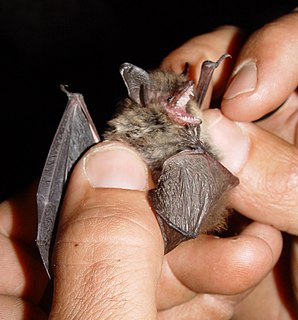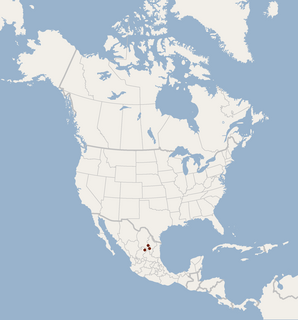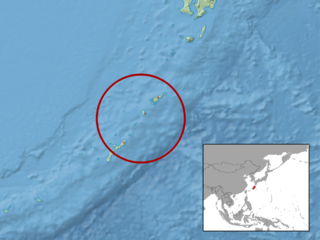
The mouse-eared bats are a diverse and widespread genus (Myotis) of bats within the family Vespertilionidae.

The greater mouse-eared bat is a European species of bat in the family Vespertilionidae.

The Atacama myotis is a species of vesper bat in the family Vespertilionidae. It is found in Chile and Peru, an example ecoregion of occurrence being the Chilean matorral.
Peters's myotis or the small black myotis is a species of insectivorous vesper bat. It is found in Indonesia, Malaysia, Thailand, Vietnam, and the Philippines; its exact distribution is uncertain as it is difficult to distinguish from some other Myotis species. It appears adaptable to a variety of habitats, including primary tropical moist lowland forest, secondary forest, agricultural areas and villages.

The peninsular myotis is a species of vesper bat. It is endemic to northwestern Mexico, found only within Baja California Sur state on the southern Baja California Peninsula. Its habitats include the southern Peninsular Ranges and deserts.

The flat-headed myotis is a species of vesper bat. It is endemic to Mexico where it is found in certain montane forests in the Sierra Madre Oriental in the northeast of the country. Once thought to be extinct, this bat was rediscovered in 2004 by Joaquín Arroyo-Cabrales and colleagues. The species is now classified as endangered by the IUCN.

Myotis vivesi, the fish-eating bat or fish-eating myotis, is a species of bat that lives around the Gulf of California, and feeds on fish and crustaceans. It is the largest species of the genus Myotis in the Americas, and has exceptionally large feet, which it uses in hunting. It was described in 1901 by Auguste Ménégaux and is the only species in the subgenus Pizonyx.

Welwitsch's bat also known as Welwitsch's mouse-eared bat or Welwitsch's myotis is a species of vesper bat native to Africa.

The Yanbaru whiskered bat(Myotis yanbarensis) is a species of vesper bat in the genus Myotis.

Escalera's bat is a European bat in the genus Myotis, found in Spain, Portugal, and far southern France.

The lesser mouse-eared bat is a species of insectivorous bat in the family Vespertilionidae.
The Armenian whiskered bat, also known as the Hajastan myotis or the Armenian myotis, is a species of bat from the family Vespertilionidae. The Armenian whiskered bat was formerly included as a part of the whiskered bat, but was considered distinct in 2000 as a result of morphologic comparison.
Temminck's mysterious bat is a species of bat of the family Vespertilionidae.
Myotis nyctor is a species of bat found in the Lesser Antilles. It was previously considered a subspecies of Schwartz's myotis, Myotis martiniquensis, but was elevated to species rank in 2012.










